When it comes to maintaining your vehicle’s performance and efficiency, few tasks are as simple yet impactful as changing the air filter. This often overlooked maintenance step can not only save you money but also improve your car’s gas mileage.
In this comprehensive guide, we will walk you through the process of changing your car’s air filter, highlighting the benefits it offers and providing a cost comparison between DIY and professional services.
Difficulty: Beginner
Estimated Time: 15 Minutes
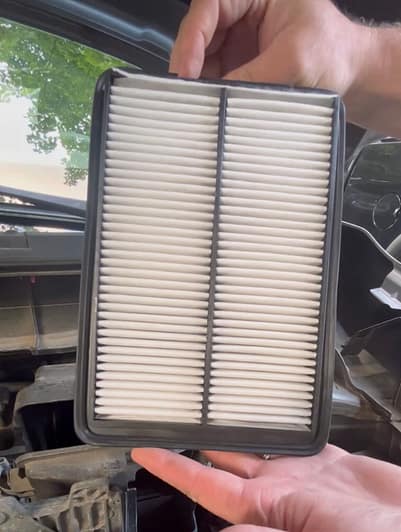
CHECK OUT MY YOUTUBE CHANNEL
Tools:
- Screwdriver (If needed, most air boxes just have clips)
- Vacuum
Supplies:
- Air Filter
Understanding the Importance of an Air Filter
Your car’s air filter plays a vital role in preventing contaminants, such as dust, pollen, and debris, from entering the engine. Over time, the filter becomes clogged, hindering airflow and reducing fuel efficiency. By regularly changing the air filter, you can ensure optimal engine performance and save money in the long run.
DIY Air Filter Change: Step-by-Step Instructions
Changing your car’s air filter is a relatively simple task that can be completed with basic tools (or potentially none) and minimal mechanical knowledge. Follow these steps to perform a DIY air filter change:
Step 1: Locate the air filter housing
The air filter housing is usually located on the top or side of the engine bay. Refer to your owner’s manual to find the exact location. (In the picture, my 2015 Nissan Rogue Air Box is located right in front of the Driver’s Seat)
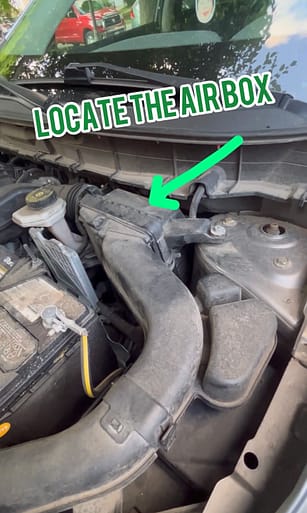
Step 2: Remove the housing cover
Depending on your car model, you may need to remove clips, screws or latches to open the housing. The screwdriver you grabbed for this job may come in handy in this step.

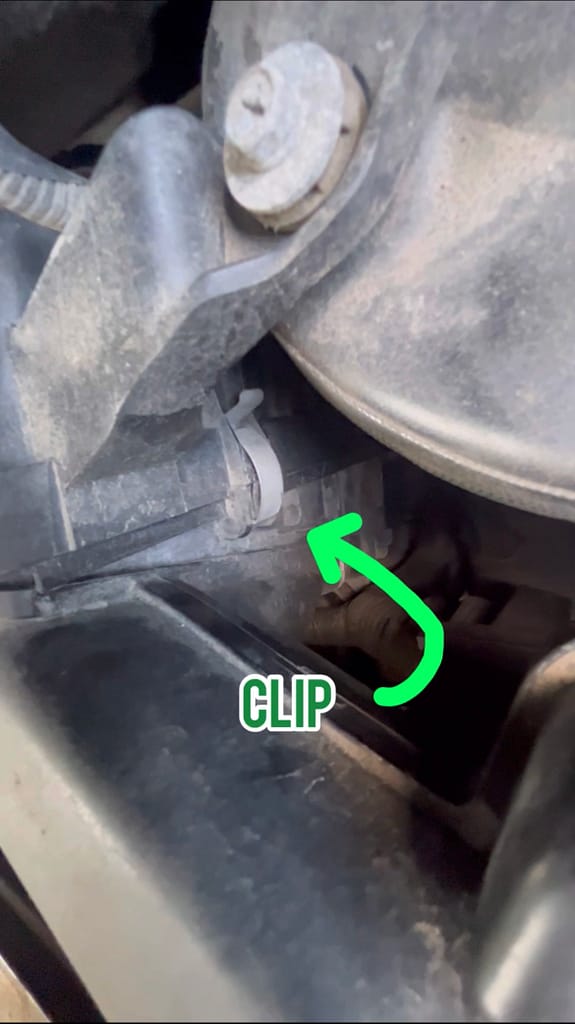

Step 3: Take out the old air filter
Once the housing is open, you should be able to see the old air filter. Carefully remove it and inspect it for signs of dirt and damage.
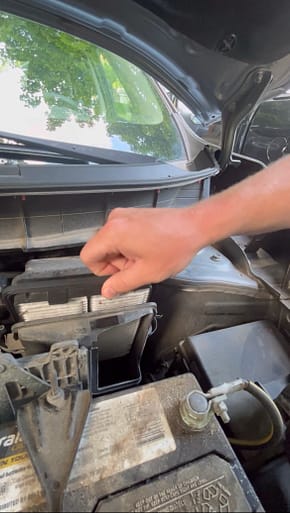
Step 4: Clean the air filter housing
Before inserting the new air filter, use a clean cloth to wipe the inside of the air filter housing to remove any dirt or debris that may have accumulated. You can also use a vacuum as well to remove the dirt and debris.
Step 5: Inspect the new air filter
Carefully inspect the filter material for any tears, holes, or loose fibers. The filter should be clean, without any visible signs of damage or excessive dirt. Inspect the frame of the air filter. It should be sturdy and intact, with no cracks or broken edges. A damaged frame may result in improper installation or air leakage.
If the air filter is still clean, like the picture, feel free to vacuum it to remove the dirt and debris, and it can be reused vs. replacing with a new air filter.
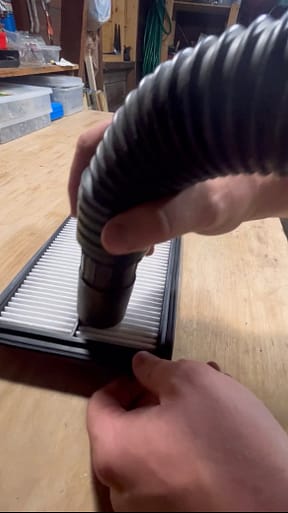
Step 6: Install the new air filter
Insert the new air filter into the housing with the pleated side facing up. Make sure the filter is securely in place. Ensure that the air filter is properly seated in the housing, otherwise you may have difficulty closing the housing, or have decreased performance. Without a proper seal, you have a risk of allowing unwanted items into your engine, potentially causing more damaging issues to your engine.
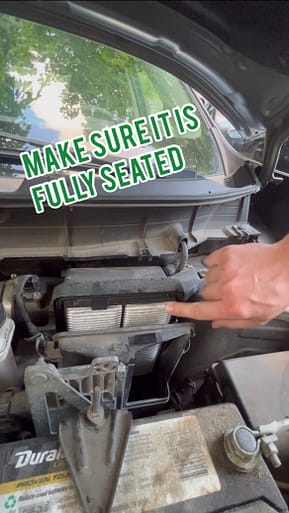
Step 7: Replace the housing cover
Once the new air filter is installed, close the housing and make sure it’s secured properly. You can install the clips, screws or latches just as you did when removing the housing cover.
Step 8: Close the hood & Start the engine
Once the air filter is replaced, start the engine and make sure it’s running smoothly. In most cases, there will not be any significant or immediate changes in the sound of your engine, but your results will come in your fuel efficiency.
Benefits of Changing Your Air Filter
By replacing your car’s air filter regularly, you can reap a range of benefits, including:
- Improved fuel efficiency: A clean air filter allows for better airflow, resulting in improved gas mileage and reduced fuel consumption. Resulting to less emissions being produced into our environment.
- Prolonged engine life: Filtering out harmful contaminants helps protect your engine from damage, extending its lifespan and minimizing the risk of costly repairs.
- Enhanced performance: A clogged air filter can lead to decreased engine power and acceleration. Changing it regularly ensures optimal performance and a smoother driving experience.
- Cost savings: A small investment in a new air filter can yield significant long-term savings by maximizing fuel efficiency and minimizing repair expenses.
Cost Comparison: DIY vs. Professional Service
Now, let’s analyze the cost implications of changing your car’s air filter yourself versus relying on professional services. DIY air filter replacement typically involves purchasing a replacement filter, which can range from $10 to $30, depending on the make and model of your vehicle. On the other hand, having a professional service handle the task can cost upwards of $50, including the filter cost and labor charges.
While DIY air filter changes are more affordable, professional services offer certain advantages. Professional mechanics possess the expertise and specialized tools to ensure the task is performed correctly. Additionally, professional shops may inspect other vital components during the process, providing you with a comprehensive vehicle assessment.
Conclusion
Changing your car’s air filter is a simple yet impactful maintenance task that can lead to significant cost savings and improved gas mileage. Whether you choose to do it yourself or opt for professional assistance, regular air filter changes will help optimize your vehicle’s performance, prolong its lifespan, and save you money on fuel expenses. By prioritizing this easy maintenance step, you’ll be contributing to a healthier engine and a more economical driving experience.
Incorporating air filter replacement into your vehicle maintenance routine will pay dividends in the long run. Take charge of your car’s efficiency today by swapping out that old, clogged filter and revel in the benefits it brings.
Resources
Here are a couple great websites to obtain the specific air filter for your vehicle:
- https://www.amazon.com/
- https://www.rockauto.com/
- https://www.1aauto.com/
- https://www.autozone.com/
- https://www.oreillyauto.com/
